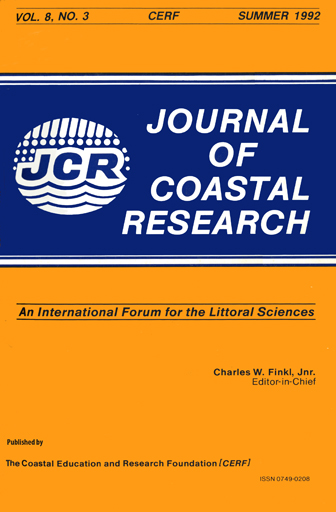Recent Saltmarsh Changes and Sedimentation Rates in the Sado Estuary, Portugal
Keywords:
Estuarine sedimentation, coastal wetlands, geomorphology, sea-level riseAbstract
The tidal mudflats of the estuary of the Sado River are composed of salt and clay with interspersed sandy units that my represent restricted paleo tidal channels or widespread fluvial flood deposits. The mineralogy of the clay is primarily montmorilonite, whereas the silt and sand grains are largely quartz. Estuarine and lagoonal salt marches cover 70% - 100% of the upper mudflat, forming narrow platforms dissected by creeks and polygenetic salt pans. The lower mudflat is dissected by meandering and anastomosing tidal channels, and is characterized by numerous small marshy islands. The spatial changes of the tidal flat features are dominated by the retreat of the upper mudflat surface caused by notching of its margin under the root layer which results in the collapse and slippage seaward of peaty blocks of marsh. As a consequence of these undercutting processes, the upper tidal flat wetland margins are retreating at rates of 0.8 10.5 cm/yr. Where tidal pans on the upper surface are breached, the scarp becomes dissected quickly and the horizontal retreat of the scarp reaches 45.5 cm/yr. The maximum measured retreat of 76.7 cm/yr is caused by anthropogenic activity. In places, progradation of the saltmarsh edge is observed reaching 1 m/yr. The vertical sedimentary record is characterized by accretion rates that, during the last decade (1978-1989), reached 0.8 5.3mm/yr on the upper mudflat (including the salt pans) and 106 mm/yr on the sandy levees. In several places a negative rate was observed, but not measured. On the lower mudflat, silty sediments and shell hash accumulate near its inland margin close to the scarp of the high march, whereas sand flats and sand levees accumulate along the margins of the estuarine channels. However, in several places present day thin deposits of sand overlay the inner margin of the low tidal mudflat as well as some portions of the high marsh surface. These sandy accumulations and the general retreat of the marsh scarp are related to the local sea level rise.


